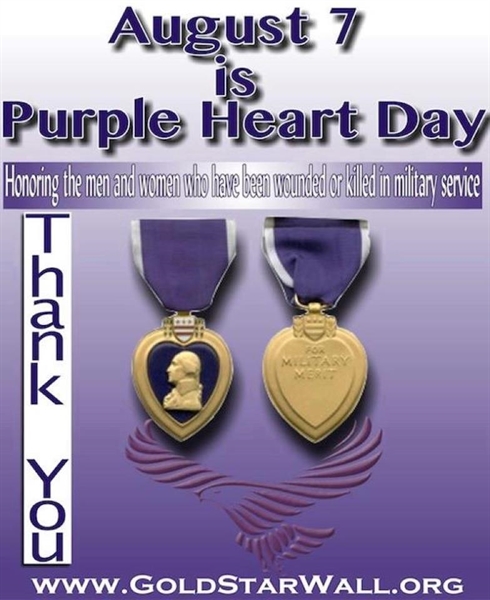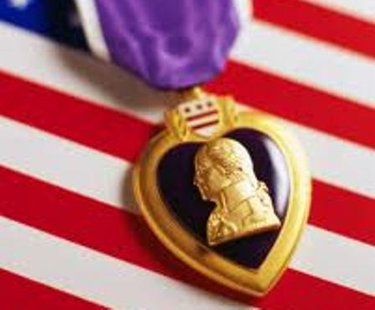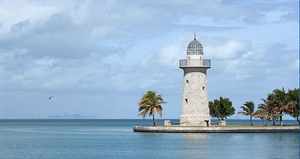Purple Heart Day 2024 is on Wednesday, August 7, 2024: Where was the first Purple Heart Awarded?
Wednesday, August 7, 2024 is Purple Heart Day 2024. Copper Gazette: August 7, 2012 Purple Heart Day of a purple, heart-shaped
As an Amazon Associate I earn from qualifying purchases.

The award we have come to recognize as the Purple Heart actually found its roots not so much in the desire to create a new medal for military men to wear, as it was in the desire to honor a great American hero of the past. George Washington was born on February 22, 1732. Nearly 200 years later the American public was preparing for the bi-centennial of his birth, complete with commemorative events and celebrations. In the process of researching the life of the Father of our Country in order to plan the celebration, General Washington's Executive Order of August 7, 1782 was found. Along with it was the record of his purple Badge of Military Merit and the accounts of the three men who had received it. On October 10, 1927 Army Chief of Staff, General Charles P. Summerall drafted a bill to send to Congress in an effort to revive the Badge of Military Merit. For whatever reasons, the bill received little support and was withdrawn early the following year.
As the bi-centennial celebration drew closer, General Summerall was replaced by General Douglas MacArthur, a hero of service in Mexico and World War I, and the son of a Civil War Medal of Honor recipient. With little public fanfare, General MacArthur began work anew on General Summerall's proposal to re-establish the Badge of Military Merit. Throughout 1931 the Army quietly designed and created the new award. It was announced on February 22, 1932...the 200th anniversary of George Washington's birth. In honor of the Father of our Country and the man who established our military's first medal, the Purple Heart would bear the profile on George Washington on its face.
The Army quickly embraced the new medal, authorizing its presentation to any soldier whose "wound...necessitates treatment by a medical officer and which is received in action with an enemy." The award itself was made retro-active, allowing World War I Army veterans who had been wounded in action to exchange previously received Meritorious Service Citation Certificates for the new Purple Heart Medal. In the early days of World War II, soldiers received the Purple Heart not only for wounds, but also in some circumstances, for meritorious service.
The Navy was not so quick to accept the Medal, and not until a year after Pearl Harbor was it authorized for sailors and Marines. On December 3, 1942 President Franklin D. Roosevelt issued an Executive Order authorizing the Purple Heart to sailors and Marines wounded or killed on or after December 6, 1941. This made all those injured or killed at Pearl Harbor eligible for the Purple Heart. At the same time he established the Legion of Merit medal for meritorious service, restricting the Purple Heart for award only to those killed or wounded in combat. Later, President Truman extended the time period for the award back to April 5, 1917, allowing Naval and Marine Corps veterans of World War I to receive the award.
Today the Purple Heart is perhaps, the most unique of all United States military awards. Though low in the order of precedence on the Pyramid of Honor (it ranks below the Bronze star), it is one of the most widely recognized and respected medals. It can not be earned by courage or by exceptional service or achievement. The Purple Heart signifies one thing...SACRIFICE. Whenever you see the Purple Heart, know that it represents either a combat death or a combat wound. It represents the blood that has been shed in defense of liberty.

Somehow John Kerry earned 3 purple hearts in 3 months to get his discharge. Can someone explain his injuries?
Purple Heart Number 1:
With its motor turned off, Kerry paddled the Boston Whaler out of the inlet into the beginning of the bay. Simultaneously the Vietnamese pulled their sampans up onto the beach and began to unload something; he couldn't tell what, so he decided to illuminate the proceedings with a flare. The entire sky seemed to explode into daylight. The men from the sampans bolted erect, stiff with shock for only an instant before they sprang for cover like a herd of panicked gazelles Kerry had once seen on TV's Wild Kingdom. "We opened fire," he went on. "The light from the flares started to fade, the air was full of explosions. My M-16 jammed, and as I bent down in the boat to grab another gun, a stinging piece of heat socked into my arm and just seemed to burn like hell. By this time one of the sailors had started the engine and we ran by the beach, strafing it. Then it was quiet.
The "stinging piece of heat" Kerry felt in his arm had been caused by a piece of shrapnel, a wound for which he was awarded a Purple Heart. The injury was not serious — Brinkley notes that Kerry went on a regular Swift boat patrol the next day with a bandage on his arm, and the Boston Globe quoted William Schachte, who oversaw the mission and went on to become a rear admiral, as recalling that "It was not a very serious wound at all." (The medic who treated him recalled that the "bandage" was a in fact a band-aid.)
Purple Heart Number 2:
Just as they moved out onto the Cua Lon, at a junction known for unfriendliness in the past, kaboom! PCF-94 had taken a rocket-propelled grenade round off the port side, fired at them from the far left bank. Kerry felt a piece of hot shrapnel bore into his left leg. With blood running down the deck, the Swift managed to make an otherwise uneventful exit into the Gulf of Thailand, where they rendezvoused with a Coast Guard cutter. The injury Kerry suffered in that action earned him his second Purple Heart.
Purple Heart Number 3 and Bronze Star:
Lieutenant (junior grade) Kerry was serving as an Officer-in-Charge of Inshore Patrol Craft 94, one of five boats conducting a Sealords operation in the Bay Hap River. While exiting the river, a mine detonated under another Inshore Patrol Craft and almost simultaneously, another mine detonated wounding Lieutenant (junior grade) Kerry in the right arm. In addition, all units began receiving small arms and automatic weapons fire from the river banks. When Lieutenant (junior grade) Kerry discovered he had a man overboard, he returned upriver to assist. The man in the water was receiving sniper fire from both banks. Lieutenant (junior grade) Kerry directed his gunners to provide suppressing fire, while from an exposed position on the bow, his arm bleeding and in pain and with disregard for his personal safety, he pulled the man aboard. Lieutenant (junior grade) Kerry then directed his boat to return to and assist the other damaged boat to safety. Lieutenant (junior grade) Kerry's calmness, professionalism and great personal courage under fire were in keeping with the highest traditions of the United States Naval Service.
This was the only injury that required time off duty for medical purposes.
He also was awarded a Silver Star between Purple Hearts 2 and 3. While all of his injuries appear to be less than a Purple Heart basis the criteria for award is any injury for which treatment is provided by a medic. So while the first wound (according the medic) could have been handled with some Hydrogen Peroxide and a bandaid the awards were all legitimate per regulation.

ARMY PURPLE HEARTS?????????????
The problem is that it is WAY too easy to fake injury for symptoms of a concussion or PTSD.
NOTE: I am NOT saying that PTSD isn't real or that our military isn't suffering - I'm just saying that it is WAAAaaayyyyy to easy to fake. If two people can survive the same incident with one not having any symptoms whatsoever, and the other totally incapable of dealing with life for the rest of his days - yeah, there's good reason to be skeptical over the issuance of a medal.












